Notes
Yes, News Photos are Becoming More Graphic … and Beautiful
Decisions about graphic images and descriptions in articles are not made lightly. In this case, he said, some aspects of the photo in question — “the fact that somebody had dropped a flower, somebody had covered it in plastic” — gave the photograph an added emotional element and power.
I found the photograph, taken by Maxim Zmeyev for Reuters, disturbing but not inappropriate. It told the terrible story, and did so artfully and with impact.
— Quote from Dean Baquet, NY Times Executive Editor (‘Not the Time for Antiseptic Coverage’: Dean Baquet on Covering Violence Abroad” via the Public Editor)
With all the debate these (violent) days about the publication of graphic photos, I think at least two points should be made.
First, it seems clear to me — showcased by the bloody bodies and mangled limbs that marked the coverage of the Boston Marathon bombing — that the tolerance of, and the standard for what constitutes a graphic media image has been changing. It’s my sense that we have outgrown the old standards of propriety and we’re more prepared to visually confront the reality of death, especially violent death. Perhaps the Grim Reaper is coming out of the closet? Why that’s so is surely multifaceted. In the mix, I’d assume, is the shattering impact of 9/11; the ubiquity of violent images circulated via social media; the fierce buzz and competition for media clicks; what seems like endless war; America’s political polarization; and the steady stream of gun violence. All told, death is just not that foreign anymore, it’s not such an abstraction — the more open presentation of it is less the decision of editors somewhere than, it seems, a pragmatic recognition of how much blood is being spilled.
…Not to wade into how violent and graphic the American entertainment industry is, but movies and television not only seem to mirror the culture of violence but perhaps overcompensates for the still overwhelmingly sanitized visual news. I had to share this photo which I saw, appropriately enough, in a news slideshow last week. Though the caption states that:
A member of the Afghan intelligence force points his pistol towards the body of an insurgent following an attack by the Taliban at Kabul’s airport
my immediate impression was Tarantino, or some like fare.
There is another point to be made however, which speaks more directly to Mr. Baquet’s quote above. I do believe that the standard has shifted, the line has moved and that media consumers, particularly here in America, are digesting more graphic imagery. I don’t think that the body from the Ukranian plane crash that is under that sheet of plastic, however, would have come our way without the rose, and its naive to propose that the flower is somehow just additive. Instead, I think the degree of artistry and the level of poetry in these photos only increases with the horror, perhaps not in every case but as regards top-flight photojournalism and an institution like the New York Times. Apparently, the artistry is acting like a buffering agent, the beauty and mystique confounding the more amplified violence and gore.
Take the picture Tyler Hicks photographed of the children who died on the Gaza City beach last week, for example. It ran prominently across the front page and also earned multiple features and highlights in The Times over several days (1, 2, 3). I imagine the photo, and the rest of his work that day, has a good chance of earning Mr. Hicks a second Pulitzer after the one he earned last year for the grisly, but also artful images he took during a terrorist siege in a Nairobi mall. Of course, the image of the splayed child is graphic and blatant. But then, it’s not anywhere as blatant or blunt as this photo that also made the rounds. Instead and in contrast, the mangled child in the foreground, grotesque but not without symmetry, is only the eye’s initial stop working upwards and into a much larger flourish of width, depth and detail, best appreciated by clicking full size the way it ran at the Times. Venturing in, we are engaged by the brave young responder and the rescue narrative; the iconic act of carrying the deceased; the contemplative quality of the beach; and nature’s emotional accompaniment in the form of rough wind and a turbulent sea.
Back to the Ukrainian image, it’s no surprise Banquet emphasizes the qualities of art, emotion and power. In fact, the Ukraine photo is as ambiguous and sumptuous as it is provocative and graphic. With a left leg and a right leg and a torso, the body is intact. The plastic is the most mysterious shroud, causing our minds to straddle between translucence and opacity. Of course, the flower is near-Shakespearean in its rich and singular color, the way it rests atop the body like a culmination, the way, geometrically, it bisects the body, and the way, also, it terminates at the face and the mouth. And then, there are the rain speckles on the plastic which places this horror in tension with the cleansing rain. That’s in tandem with the collection of stones which practically evoke a zen garden and, more essentially, the reclamation of the body by the earth.
If there is anything more telling, it’s that these photos — as graphic as they are — are also so elegant and entrancing that they nearly defy the label.
(photo 1: Maxim Zmeyev/Reuters. caption: Bodies remained Friday at the site in eastern Ukraine. Armed rebels have prevented monitors from gaining full access to the area. photo 2: Shah Marai—AFP/Getty Images. caption: Jul. 17, 2014. A member of the Afghan intelligence force points his pistol towards the body of an insurgent following an attack by the Taliban at Kabul’s airport. photo 3: Tyler Hicks/The New York Times. caption: The aftermath of an airstrike on a beach in Gaza City on Wednesday. Four young Palestinian boys, all cousins, were killed.)
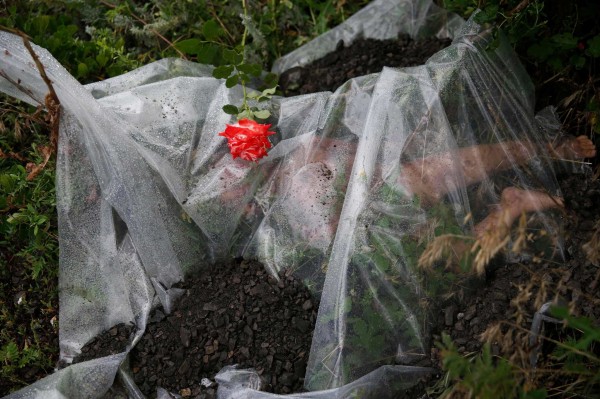
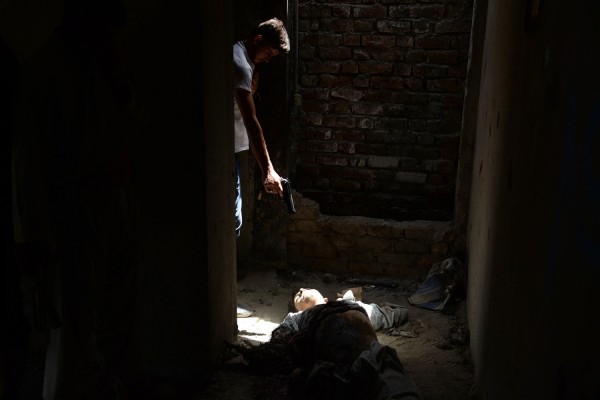
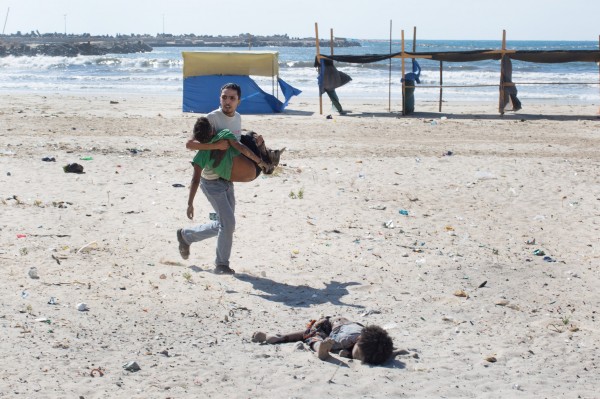
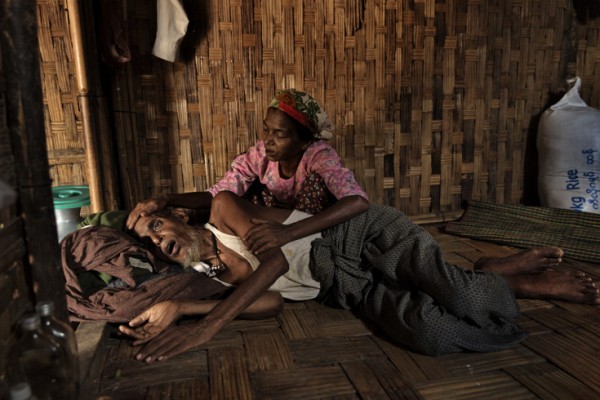
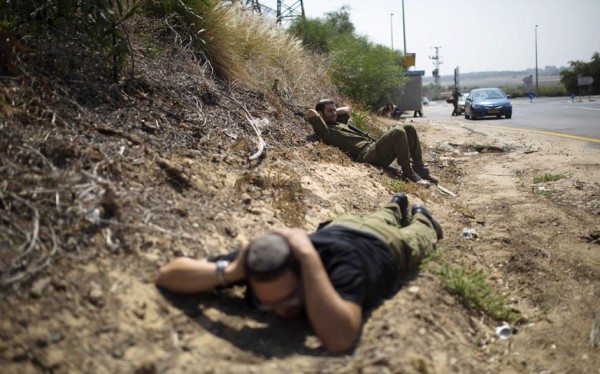
Reactions
Comments Powered by Disqus